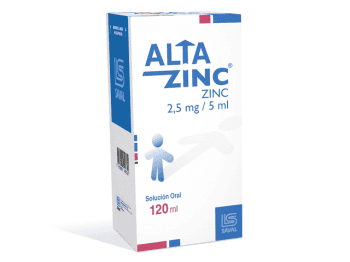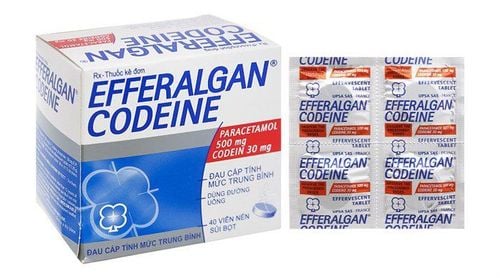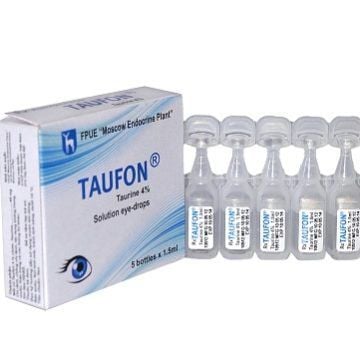This is an automatically translated article.
Nancifam is an antibiotic of the Quinolone group, effective in the treatment of diseases of the eyes, ears, nose and throat. Nancifam is a prescription drug, so to ensure effective use, users need to follow the instructions of a specialist, and refer to more information about the uses of Nancifam in the article below.
1. What is the use of Nancifam?
1.1. What is Nancifam? Nancifam belongs to the group of drugs used to treat eyes, ears, nose and throat. With the main active ingredient Ciprofloxacin (as Ciprofloxacin hydrochloride) 3mg/ml (0.3%w/v).
The drug is made in the form of an eye solution or an eye ointment tube, a box of 1 vial.
Nancifam recommended for use in adults.
1.2. What does Nancifam do? Ciprofloxacin is a new active ingredient of the quinolone group, with strong, broad-spectrum bactericidal activity against bacteria resistant to antibiotics such as penicillins, aminoglycosides, cephalosporins, tetracyclines and other antibiotics.
Nancifam is prescribed by doctors to treat infections caused by strains of bacteria sensitive to the drug in the following conditions:
Corneal ulcers caused by bacteria: Staphylococcus aureus, Pseudomonas aeruginosa, Streptococcus pneumoniae, Staphylococcus epidermidis, Streptococcus (Group of Viridans). Conjunctivitis caused by bacteria: Staphylococcus epidermidis, Staphylococcus aureus, Streptococcus pneumoniae. Contraindications:
Patients who are allergic to the main active ingredient Ciprofloxacin, quinolones or any of the excipients of the drug. Infants and young children under 2 years of age.
2. How to use Nancifam
2.1. How to use Nancifam Nancifam eye drops Wash your hands with soap or an antiseptic solution Open the cap of the medicine bottle, bring it close to the eye, about 1cm away, and gently squeeze the medicine into the conjunctival sac according to the dose prescribed by the doctor. Avoid letting the tip of the ampoule touch your eyes or eyelids, which can lead to infection. The vial should be applied to the lighter eye first, then the more severe eye. After use, close the lid of the vial carefully, avoid leaving it open Each vial is for one patient only. , do not share drugs with others Administer the medicine as directed by the doctor, do not arbitrarily add or reduce the prescribed dose. 2.2. Dosage of Nancifam Eye Drops
Recommended dose in the treatment of corneal ulcers:
Day 1: Instill 2 drops in the affected eye every 15 minutes for the first six hours. Then instill 2 drops in the affected eye every 30 minutes for the remainder of the first day. Day 2: Instill 2 drops in the affected eye every hour. Days 3 to 14: Instill 2 drops into the affected eye every 4 hours. Treatment can be continued for more than 14 days if re-examination does not show complete reepithelialization. Recommended dose in the treatment of bacterial conjunctivitis:
First two days: Instill 1 or 2 drops into the conjunctival sac every 2 hours while awake. Next five days: Instill 1 or 2 drops into the conjunctival sac every 4 hours while awake. Ointment: Apply a piece of ointment about 1-1.5 cm into the conjunctival sac, for the first two days, 3 times a day, then for the next 5 days, apply twice a day.
Handling when missed dose:
In case if you accidentally forget a dose, you must look up as soon as you remember. Try to memorize so that you don't miss a dose, it's too much, and don't double it up to make up for the missed dose.
Treatment of overdose:
Currently, there are no cases of ocular overdose with Ciprofloxacin. But if in the process of using the drug, there are any unusual symptoms or signs, immediately notify the treating doctor or take the patient to a medical facility for examination and timely treatment.
3. Notes when using Nancifam
For topical use only, do not inject into the eyes, do not drink. Do not use Nancifam medicine beyond the expiry date on the package, the drug seal is open, the drug changes color. As with other antibiotics, prolonged use of Nancifam can cause an overgrowth of non-susceptible organisms, including fungi. If superinfection occurs, appropriate treatment should be instituted. When clinical evaluation is required, the patient should be examined with the aid of magnifying instruments such as slit lamps and fluorescein staining. As soon as a skin rash or some other sign of hypersensitivity occurs, Nancifam should be discontinued. Use in pregnancy and lactation: At the recommended dose of Ciprofloxacin, no teratogenicity was observed. During pregnancy, Nancifam ophthalmic solution should be used only when the benefit to the mother and the risk to the fetus have been weighed.
4. Side effects of the drug Nancifam
The most common adverse effect is local discomfort or burning. In studies of regularly medicated corneal ulcers, approximately 17% (solution) and 13% (ointment) of patients developed white crystalline precipitates. Less than 10% of patients experienced other adverse events, including foreign body sensation, pruritus, eyelid stiffness, scaly/crystals, corneal congestion, and unpleasant taste after instillation. Less than 1% of patients had adverse events such as conjunctivitis/conjunctivitis, allergic reactions, corneal staining, eyelid swelling, lacrimation, corneal infiltration, photophobia, nausea, and decreased eye sight.
5. Nancifam drug interactions
Not many specific drug interaction studies have been performed with ciprofloxacin eye drops.
As for the systemic route, an increase in the serum concentration of theophylline has been observed, enhancing the effect of oral anticoagulants. An increase in serum creatinine was also observed in patients receiving concomitant cyclosporin.
6. How to store Nancifam
Preservation time of Nancifam medicine is 24 months from the date of manufacture Store the medicine in the package, in a cool, dry place, avoid humid places in the house such as the refrigerator or bathroom, avoid places that are too hot such as Next to the refrigerator or oven will damage the texture of the medicine. The ideal storage temperature is from 20 to 30 degrees Celsius The opened bottle is only used for 1 treatment, not for pain episodes. Keep out of reach of children. Above are the uses of Nancifam, patients should carefully consult and use the drug according to the instructions to get the best treatment results.













